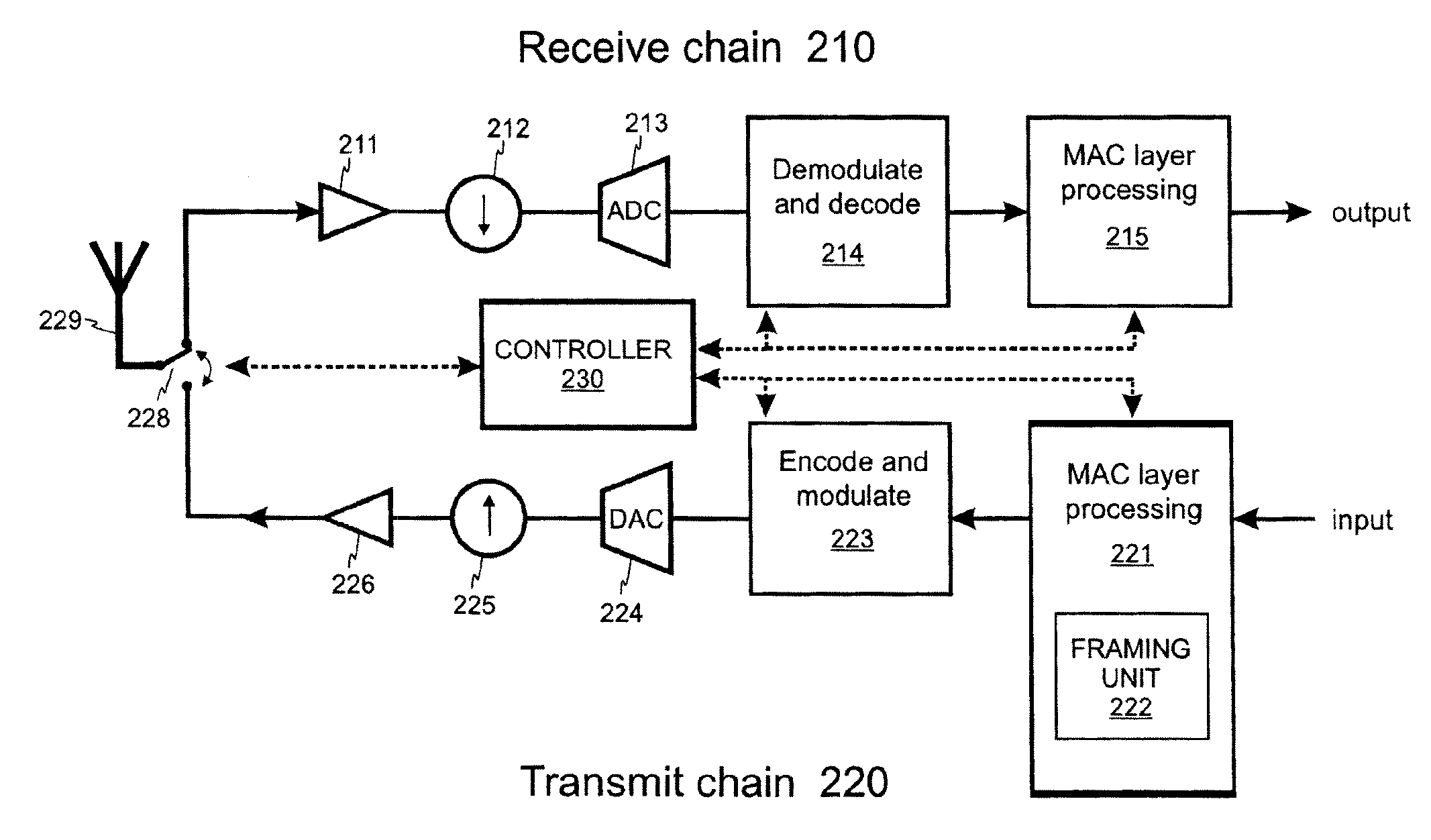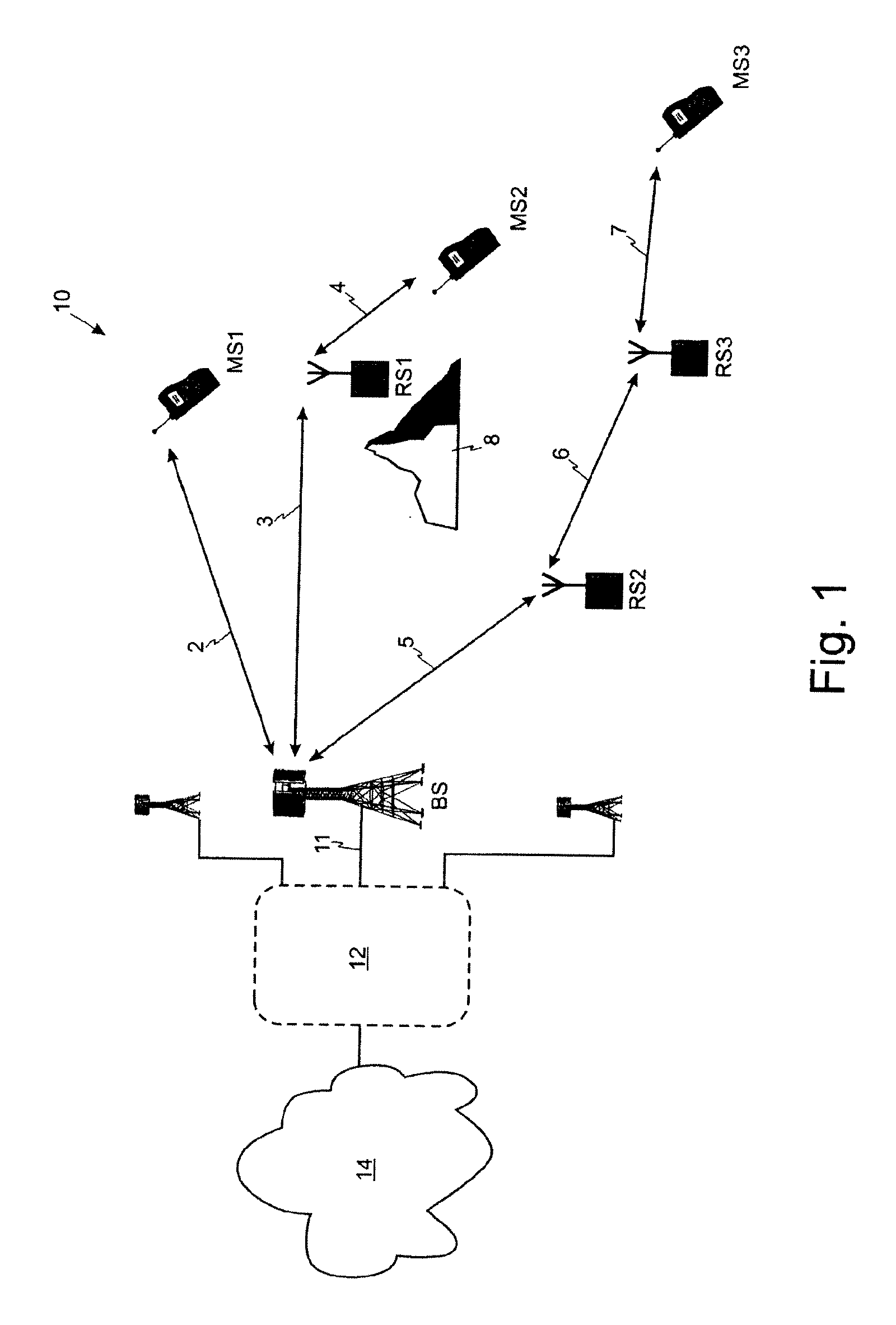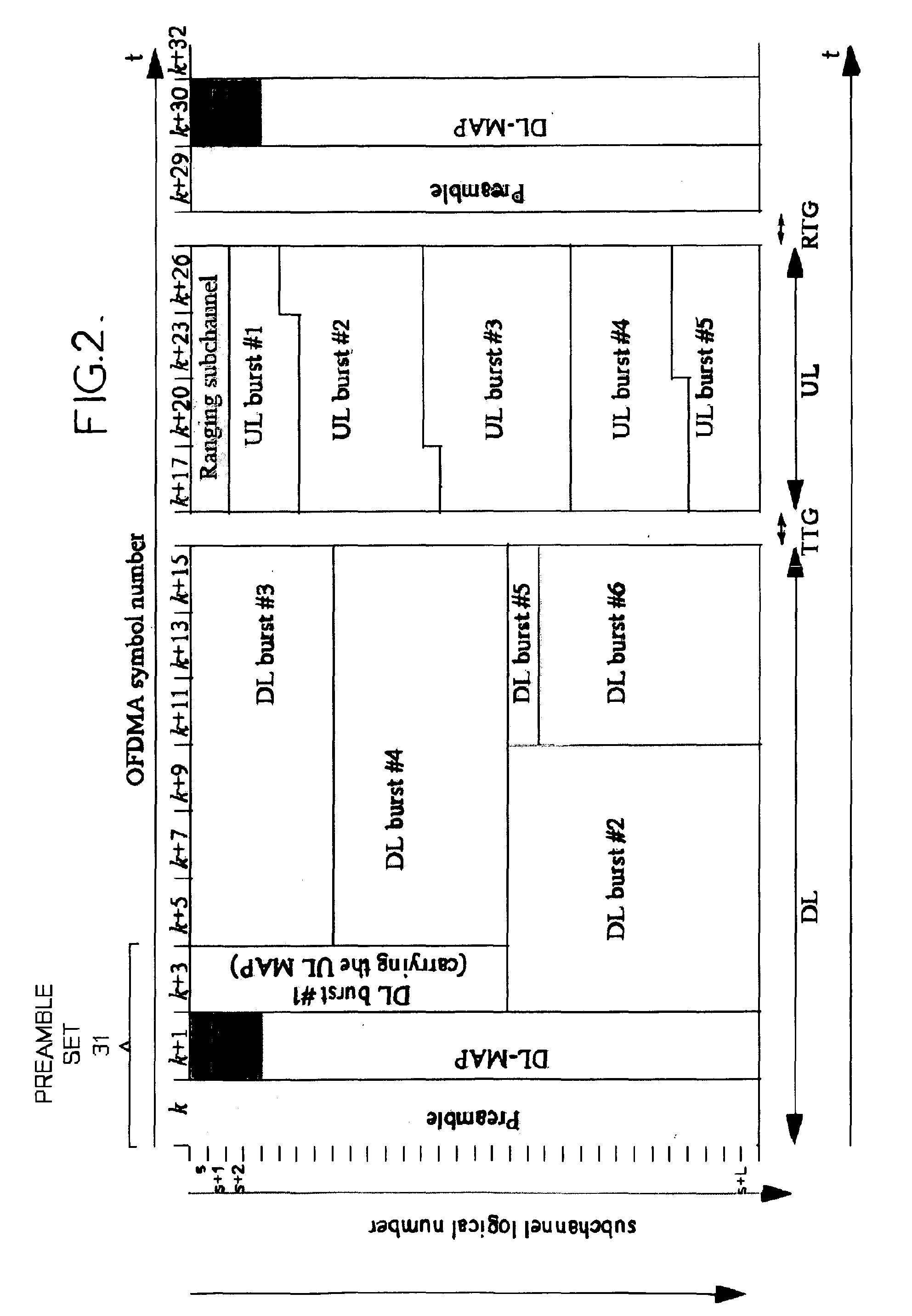Frame structure for a multi-hop wireless system
a wireless system and frame structure technology, applied in wireless communication, multiplex communication, frequency-division multiplex, etc., can solve the problems of increasing the complexity of equipment at a relay station, affecting the service life of the relay station, so as to reduce the interference within the network
- Summary
- Abstract
- Description
- Claims
- Application Information
AI Technical Summary
Benefits of technology
Problems solved by technology
Method used
Image
Examples
Embodiment Construction
[0045]Embodiments of the invention will be described with reference to a wireless system 10 of the type shown in FIG. 1 in which a base station BS serves a set of terminals MS1-MS3 via direct transmission paths and via multi-hop transmission paths which use relay stations RS1-RS3. FIG. 4 shows a first embodiment of a time-division duplexed transmission frame transmitted by a base station BS which is divided into a downlink sub-frame 20 and an uplink sub-frame 25. As described above, the base station BS, relay stations RS1-RS3 and terminals MS1-MS3 are all synchronised to the time-division duplexed transmission frame.
[0046]In this embodiment the downlink sub-frame 20 transmitted by the base station is divided into two parts 30, 40. The first part 30 begins with a first preamble set 31. This first preamble set 31 carries control information which is intended for end terminals (e.g. mobile stations or fixed wireless terminals). As described previously in connection with FIG. 2, the fir...
PUM
 Login to View More
Login to View More Abstract
Description
Claims
Application Information
 Login to View More
Login to View More - R&D
- Intellectual Property
- Life Sciences
- Materials
- Tech Scout
- Unparalleled Data Quality
- Higher Quality Content
- 60% Fewer Hallucinations
Browse by: Latest US Patents, China's latest patents, Technical Efficacy Thesaurus, Application Domain, Technology Topic, Popular Technical Reports.
© 2025 PatSnap. All rights reserved.Legal|Privacy policy|Modern Slavery Act Transparency Statement|Sitemap|About US| Contact US: help@patsnap.com



